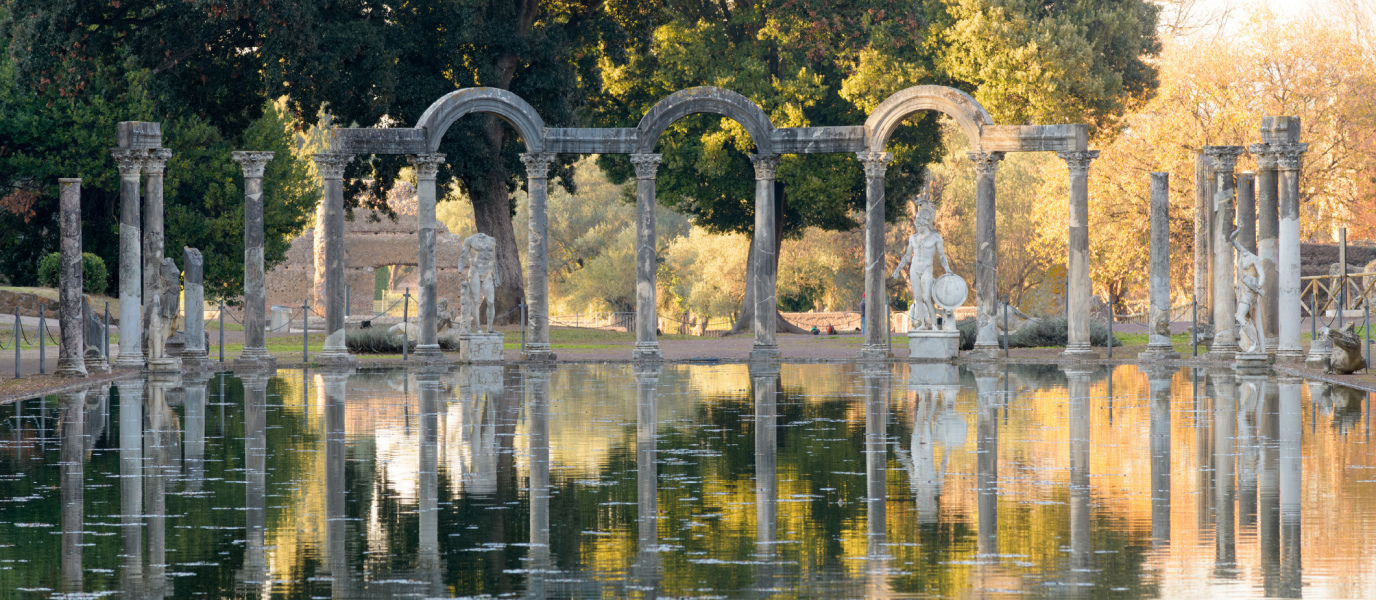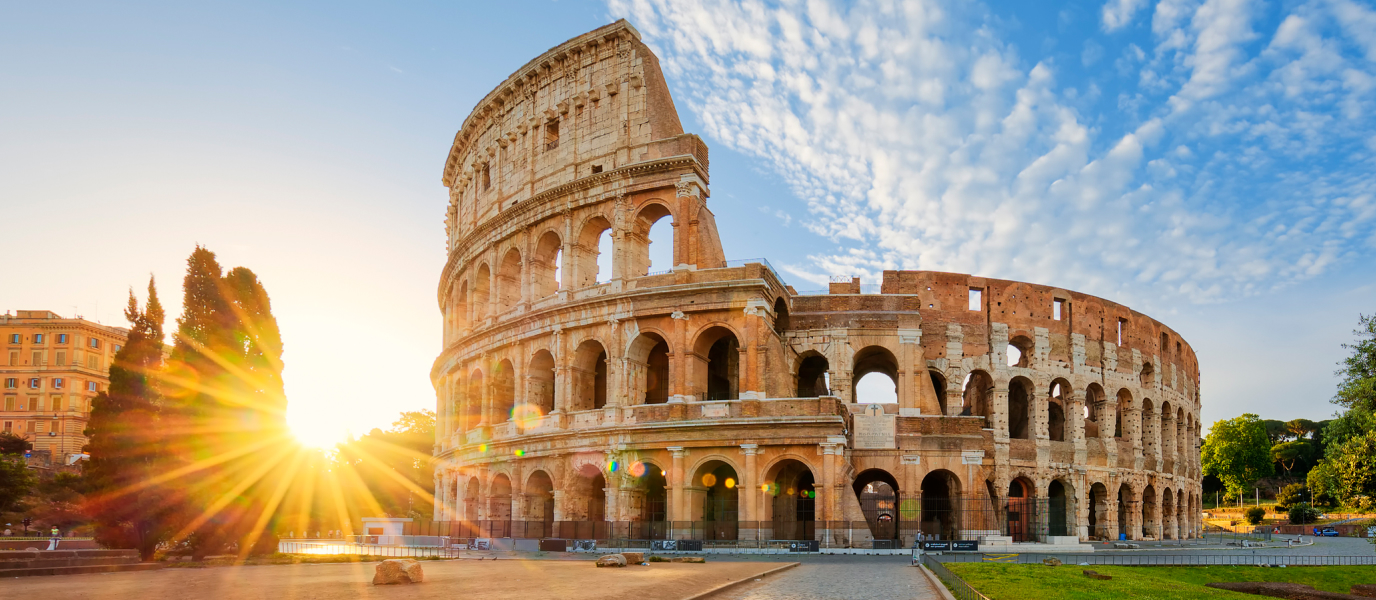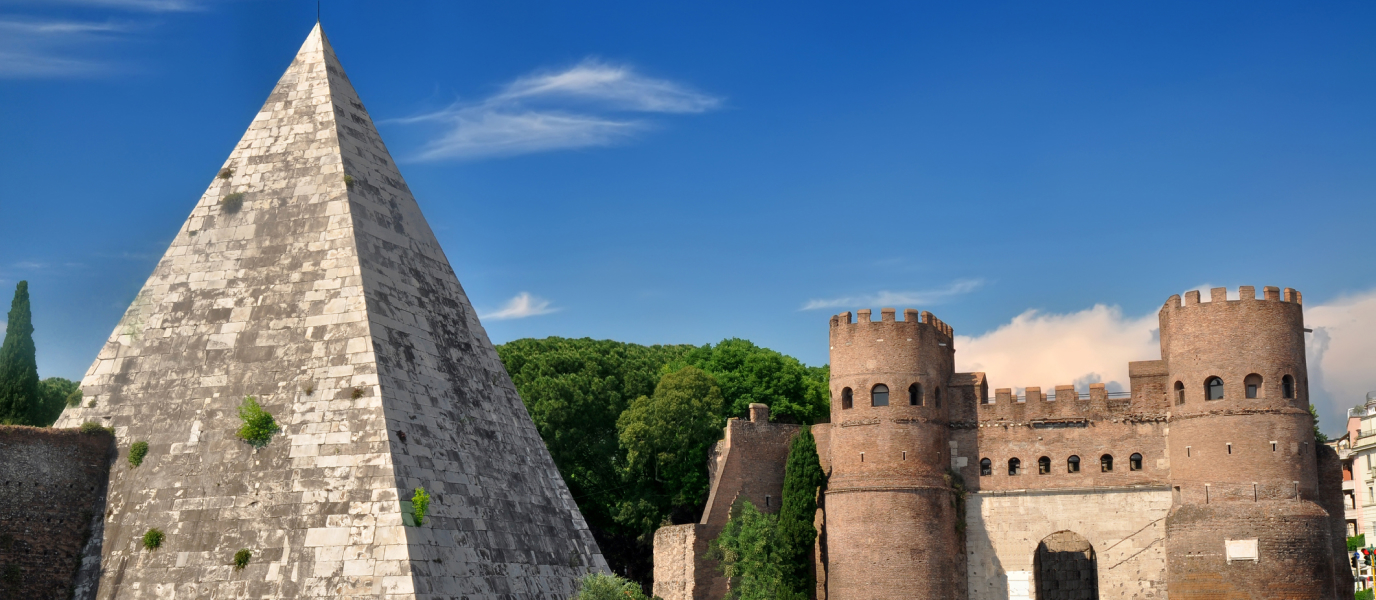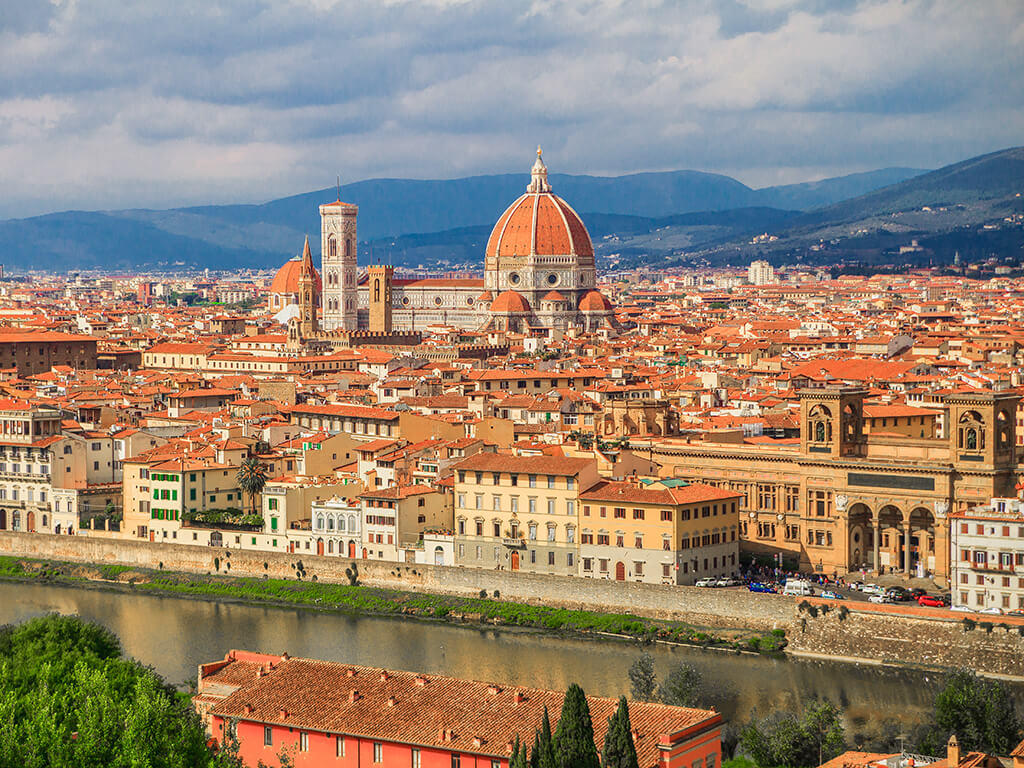The awe-inspiring cultural patrimony left behind by the Roman Empire never ceases to amaze. One such example is the Temple of Hadrian, built in honour of the great Roman Emperor Hadrian in 145. The ruins of this architectural gem are located in the historic centre of Rome in the quaint Piazza de Pietra, near the Pantheon.
All that remains of this classical relic are eleven towering Corinthian columns that seem to rise out of nowhere. The only surviving wall was built into the adjacent 17th-century palazzo which houses Italy’s main stock exchange.
It is common to stumble upon Roman ruins that have either been included in newer constructions or simply built upon in this two-thousand year old city. Some buildings have survived the test of time, such as the Colosseum and the Pantheon, while others, such as the Temple of Hadrian were replaced by later constructions. Some buildings have simply disappeared over the course of history and we can only begin to imagine the grandeur of Imperial Rome thanks to digital reconstructions.
The architecture of the Temple of Hadrian
The Temple of Hadrian was built in honour of the great Roman Emperor Hadrian who brought peace and prosperity to Rome during his 21-year reign. It was commissioned by Hadrian’s successor and adopted son, Antonius Pius. This mighty construction was originally composed of 15-m high Corinthian columns but only eleven remain intact. They belonged to the north façade of the building.
The rectangular-shaped temple was designed in peripteral style and lined with fifteen columns on the longer sides while eight columns lined the shorter sides. The columns had reliefs of personifications of the provinces of the empire, some of which are housed in the Capitoline Museums.
There was a 4-m high staircase leading up to the portico from the main façade. This was a typical architectural feature of Roman temples during Antiquity. The ruins reveal an interesting geological fact about the site: the original ground level of the temple was several metres below the current street level. This means the city has risen over the course of history.
Grey-and-white Proconnesian marble was used to build the temple. This type of marble came from north-eastern Turkey and only began to be employed at the end of Hadrian’s reign. Limestone and giallo antico marble, a yellow-coloured marble from Tunisia, were also used for the columns
Today, the Temple of Hadrian houses a museum dedicated to Hadrian and an exhibition hall. Some remains of the temple can be seen on display.
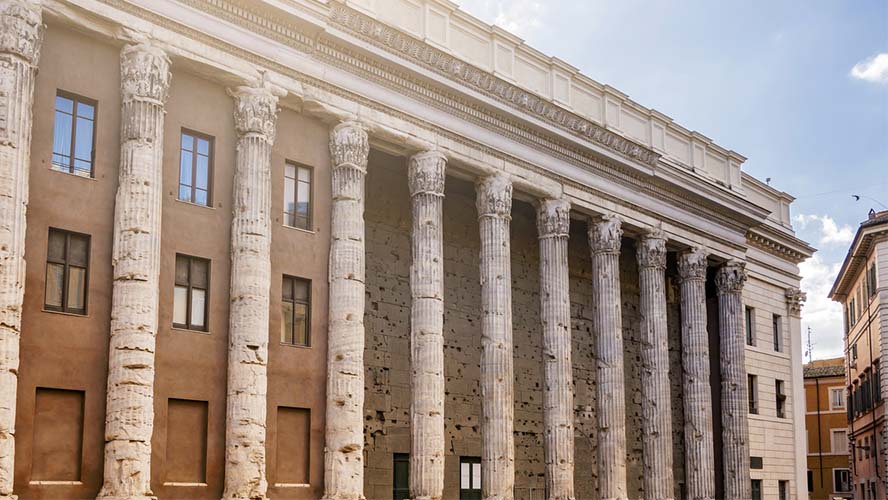
Location
The Temple of Hadrian was located in ancient Rome in an area dubbed Campus Maritus, which in present-day Rome corresponds to the historic centre. Named in honour of the Roman god of war, Mars, this monument-studded area includes the Column of Marcus Aurelius; the Solarium Augusti, the largest solar marker of Antiquity; and the Temple of Matidia, dedicated to the Hadrian’s mother-in-law.
The Pantheon, the Baths of Nero and Ara Pacis are also located in this area, which spreads from Monte Pincio to the Capitolium and the banks of the Tiber River.
Who was Hadrian?
The only way to understand why the Temple of Hadrian was erected in honour of Hadrian, one must first understand who this Roman Emperor was.
Publius Aelius Hadrianus Augustus, Hadrian, was a Roman Emperor who ruled between 117 and 138. He was part of the Nerva-Antonine dynasty and was likely born in Italica, present-day Santiponce, in the province of Seville, Spain. He became emperor following the death of his uncle Trajan.
Hadrian travelled extensively throughout the Roman Empire, visiting every Roman province, including Britannia, Hispania, Greece and Syria. He sought to foster peace, bring improvements to infrastructure and maintain the support of its inhabitants. His reign was marked by a period of peace and prosperity, with few military activities and an important administrative reform. He preferred to slow down the empire’s expansion and strengthen the weakest points of the borders, such as in Britannia, with the construction of Hadrian’s Wall. It was built to separate the Barbarians from the Romans along the present-day England-Scotland border.
Hadrian was also responsible for the construction of some of the most iconic landmarks still visible to this day. This includes Castel Sant’Angelo, the Temple of Venus, the bridges across the Tiber River, the reconstruction of the Pantheon in Rome, and the Arena of Nîmes in France. The civil works he undertook were unpopular among the Senate and his death revealed the ill-will Rome had towards him. It probably didn’t help that was considered a little too Greek with his Philhellenic approach to politics. Some esteemed Hadrian as a great civil servant and his reign proved to be one of the best periods of Roman rule. In fact, he is included among the ‘Five Good Emperors’.
Rome is an open-air museum, dotted with incredible monuments around every turn, transporting visitors to Imperial Rome. Read our guide to Rome (Link: Rome Guide) to learn more about the city’s hidden architectural and artistic gems.




































































